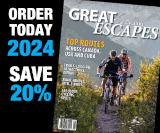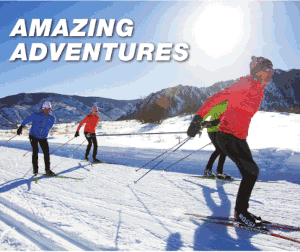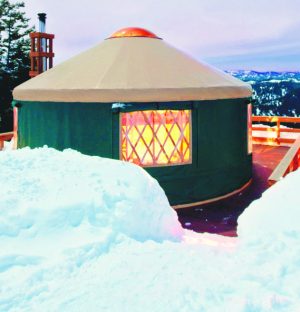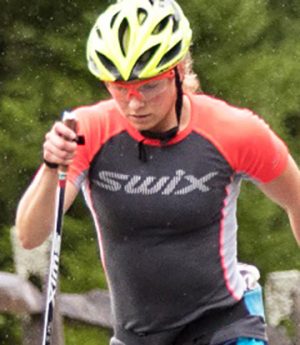July 13, 2016 – Cross country skiing is a highly technical sport that requires years of practice in order for a skier to become technically proficient. Unfortunately we do not have year-round snow so that athletes can have continuous practice.
Rollerskiing is the most specific way of skiing in the summer (other than skiing on glaciers…) and therefore provides skiers with the opportunity to develop and refine their ski technique year round.
To encourage clubs and young athletes to increase their rollerski training during the dryland season, CCC is launching a new Racing Rocks! event aimed at athletes at the end of the Learning to Train (L2T) stage: Roller Ski Rocks! RSR! events can come in various shapes and forms but will generally use smooth paved terrain with a flat to undulating profile (no long or steep hills) and where car traffic is either restricted or controlled.
Objectives of RRS! events:
The main goal of hosting RSR! events is to provide an incentive to young skiers to increase their ski-specific training during the off-season through participation in fun, team competitive rollerski events.
In addition to the technical development benefits of ski specific training during the long dryland season, rollerski events are also great opportunities for skiers of different clubs to keep the same camaraderie going during the dryland season as they share during the winter racing season.
Another advantage of rollerski events is that they can be held right in town and be great opportunities to promote our sport towards the general public as they are fast and exciting to watch. Who knows, they might even help recruit new participants attracted by this “extreme sport” side of cross country skiing!
Why host a Rollerskiing competition:
To keep our young athletes in top condition and having fun during dryland training, CCC is promoting Rollerskiing Competition which uses a smooth paved terrain closed from car traffic for a competition course.
The idea of a Rollerskiing competition is to bring together young athletes in the transition between the L2T and T2T stages of athlete development (11-12) to apply their cross-country ski racing skills during the off-season in a fun, safe and motivating environment..
Other objectives include encouraging achievement through team effort, promoting good ski technique and providing young participantswith a wide range of ski experiences to develop many skills.
Rollerskiing format and technical information:
Organizers should determine in advance whether the race will be skating technique only, classic technique only, or if skiers can use either technique. Other decisions might include the use of poles – or not, mixed age categories, boy/girl teams, etc. Numbered race bibs will be essential.
The competition course requires thorough planning since it is best done in a course which is closed to all other road traffic. A keen awareness of the terrain and the skill level of the participants is essential. Advanced skiers can race on hilly terrain, but for the most part it should be relatively flat or only slightly undulating, with plenty of space on each side of the course for skiers to “run-out” if they feel that they have too much speed or lack control.
The objective is to have a fast course without fast turns, but with good spectator possibilities and allow for a showcase of various ski techniques. The best venue to do this may be your local recently re-surfaced parking lot which is clear of cars or a bicycle path. Note also, that if your community is hosting a bicycle criterium race, you may want to coordinate to use the same course and timing system. Above all considerations, the course must be suitable for the age and skill level of the participants, and safety is always the first consideration.
For complete safety guidelines, please consult CCC’s rollerskiing policy.
Music is an important component of this activity; it can generate a lot of excitement and spectator amusement.
The organizers should determine the age categories for the Rollerski competition. Various groupings can work well, such as: joining two age groups together; providing a category for every year of birth; or providing categories for both male and female. All are appropriate options depending on the number of participants.
Recommended age/distance categories:
| Age Categories | Distances |
| 10-13, depending on level of development | 100- 2000 meters |
Options for organizing Rollerskiing Competition:
Option #1: set up three stations and four groups/teams of athletes
- Each station should have a different course with different challenges. These can include slalom around cones, a speed course and a team relay.
- The teams then rotate from station to station, using the break in between to get a drink or snack etc.
- Each participant contributes to points for their team by completing the assigned course at each station.
The team points are earned by their combining times at each station. The number of points they earn as a group depends on their ranking in comparison to the other teams. This option requires timing and a team aggregate ranking.
Option #2: set up as many as four “barrel racing” loops.
- Each loop has two athletes competing against each other, going in opposite directions around the course.
- The athletes who finish first from each round moves on to the next round.
- The athletes who finish in second place race against the other second place finishers until all athletes have had several turns at the course.
- No timing required.
Option #3: set up one competition course that is wide enough for two to four athletes to compete at the same time. These athletes start at the same time and compete head-to-head.
- The athletes who finish first, or the top two athletes from each wave, can move onto the next round.
- The athletes who finish in 3rd or 4th place can move into their next round.
- For a fast action event, the second wave of starters can begin before the first wave is finished, depending on the judgment of the starter.
- Note that the start line needs to be adjusted to take into account the advantage of being on the inside if the course turns to one side or the other soon after the start.
- No timing is required.
Race support:
Clubs will need manual stop-watches, numbered bibs for every race participant, course markers, and an adequate number of race volunteers/ officials to ensure the safety of the athletes.
Registration fees:
Event organizers are encouraged to keep their entry fees as low as possible (or nil) to encourage participation.
Suggestions for Host club:
- To promote the event outside of the club membership, to other ski clubs in the local community.
- To organize a Rollerskiing competition according to the technical requirements outlined above. This would include the provision of awards of some type. You can be creative – the awards can be cookie medals, made of popcorn, etc.
- Although it is not a requirement of hosting this event, CCC would appreciate some digital photos and a very brief summary of the activities in order to encourage others to host similar events. You could even end up as a feature on our website!






![National camp action [P]...](https://skitrax.com/wp-content/uploads/2019/08/Duluth-4-2019-08-08-at-10.46.51-AM-300x246.png)
![Matt Liebsch on the CXC Elite Team [P] CXC...](https://skitrax.com/wp-content/uploads/2019/08/Matt-Liebsch-CXC.2-525x700.4-300x267.jpg)
![Dan LaBlanc [P]...](https://skitrax.com/wp-content/uploads/2019/08/Dan-LaBlanc-img_1855.3.jpg)

![[P]](http://skitrax.com/wp-content/uploads/2016/07/RSR.jpg)
July 13th, 2016 at 10:15 am
This is a super presentation and hope to see more from CCC in the future. Would suggest a video support tape to give visual cues and a physical presence to this program.
Keep them coming!